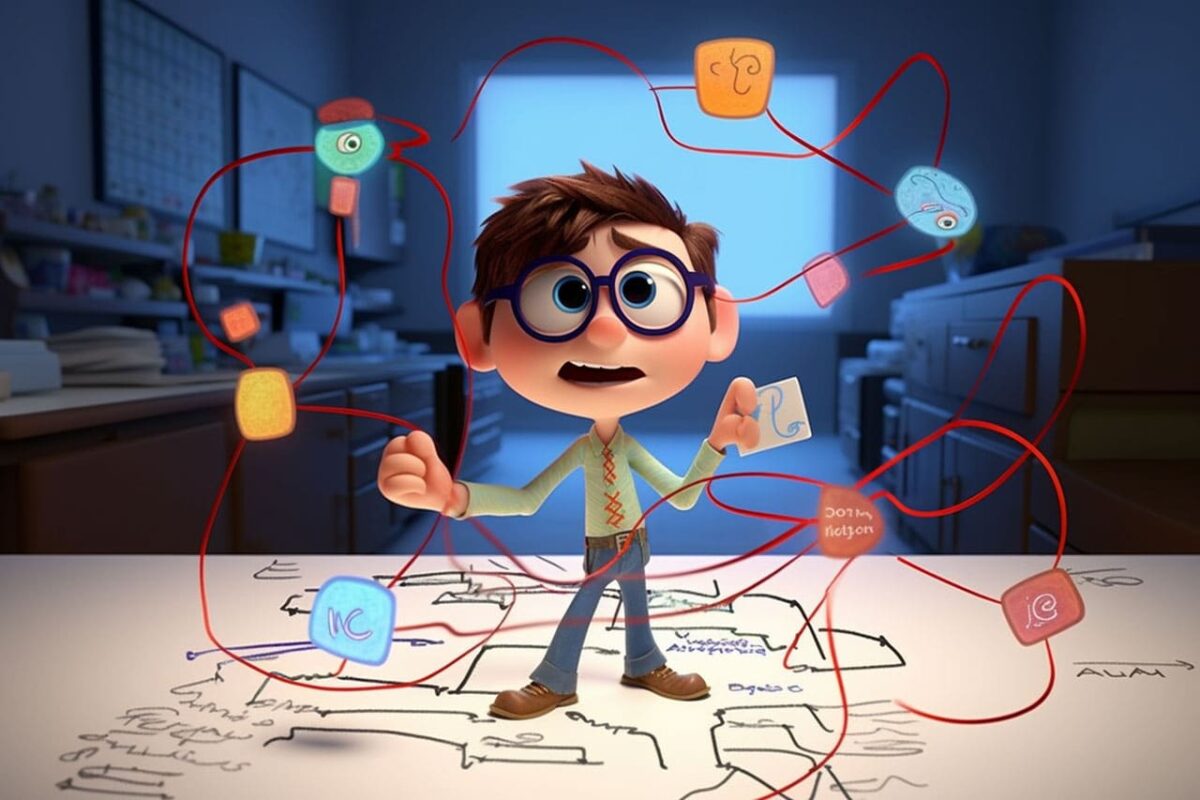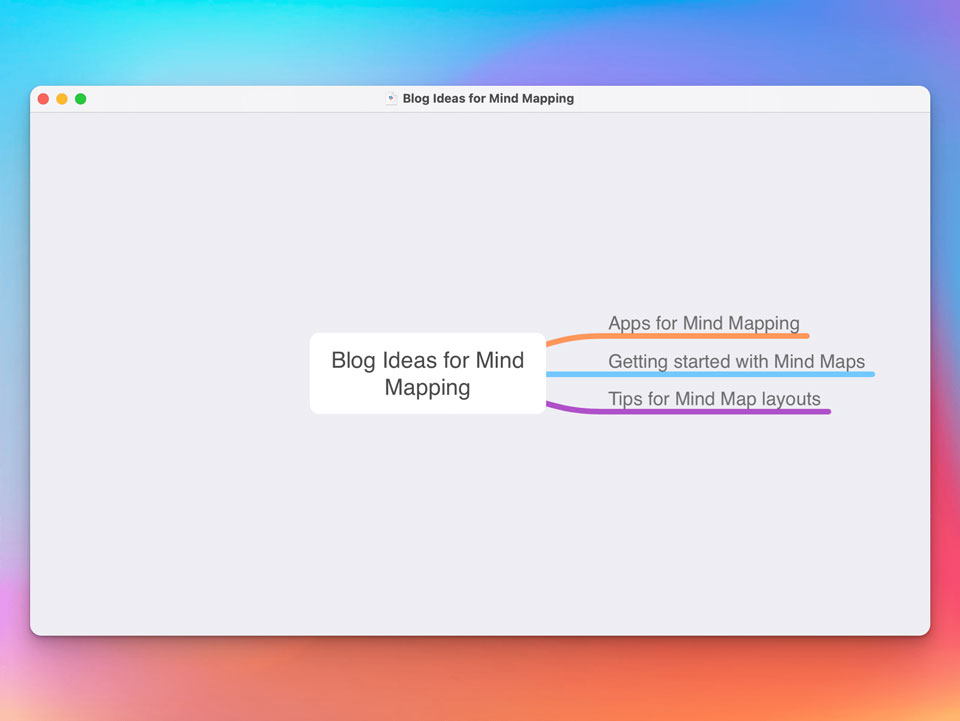Once upon a time, in a world not too dissimilar from our own, the art of mind mapping was born. A remarkable technique that has the power to unlock the hidden treasures of our minds and unleash a torrent of creativity. Mind mapping is a visual thinking tool that allows us to explore and organize our thoughts in a non-linear and imaginative way. In this article, we will delve into the enchanting realm of mind mapping techniques and discover how they can revolutionize the way we think, create, and organize our ideas.
The Birth of Mind Mapping
Before we embark on our journey to unravel the secrets of mind mapping techniques, let us take a moment to appreciate its humble beginnings. The concept of mind mapping can be traced back to the ingenious mind of Tony Buzan, a British psychologist and author. Inspired by the intricate workings of the human brain, Buzan sought to create a method that would mimic the natural thought processes of the mind.
The Essence of Mind Mapping
At its core, mind mapping is a simple and intuitive technique. It starts with a central idea or concept, which is placed at the center of a blank canvas. From there, we branch out, like the tendrils of a growing tree, to explore related ideas, concepts, and associations. Each branch represents a different train of thought or a unique perspective, creating a network of interconnected ideas.
One of the key advantages of mind mapping is its ability to engage both hemispheres of the brain. The right hemisphere, known for its creativity and intuition, comes to life as we let our imagination run wild and unleash our artistic flair. Meanwhile, the left hemisphere, responsible for logical thinking and organization, steps in to help us structure and make sense of the chaos.
Unleashing Creativity with Mind Mapping Techniques
Creativity is often regarded as the spark that ignites innovation and originality. Mind mapping techniques provide the ideal playground for our creative faculties to flourish. Let’s explore some powerful techniques that can help unlock the creative potential within us:
1. Radiant Thinking
Radiant thinking is the foundation upon which mind mapping is built. It encourages us to think freely and without limitations, allowing our thoughts to flow and connect naturally. By breaking free from the confines of linear thinking, we can tap into our innate creativity and uncover novel ideas and perspectives.
2. Colorful Expressions
The world is a vibrant tapestry of colors, and our minds are no exception. Adding colors to our mind maps not only makes them visually appealing but also stimulates our senses and enhances our memory retention. Each branch can be assigned a different color, creating a visual hierarchy that aids in comprehension and association.
3. Mind Mapping with Images
A picture is worth a thousand words, they say, and mind mapping embraces this philosophy wholeheartedly. Incorporating images into our mind maps adds depth and richness to our ideas. Visual cues not only make the map more engaging but also trigger our visual thinking, leading to a more holistic understanding of the subject matter.
4. Free-Flowing Associations
In the realm of mind mapping, there are no rules or restrictions. It encourages us to explore seemingly unrelated ideas and make connections that might not be obvious at first glance. By embracing serendipity and allowing our thoughts to wander freely, we can stumble upon groundbreaking insights and innovative solutions.
5. Mind Mapping in Reverse
Sometimes, when we find ourselves stuck in a creative rut, it helps to reverse our thinking. Instead of starting from a central idea and branching outwards, we can begin with a specific problem or challenge and work our way back towards its root causes or potential solutions. This reverse mind mapping technique allows us to approach the problem from a different perspective and uncover fresh insights that may have eluded us before.
6. Mind Mapping in Collaboration
Two minds are better than one, as the old adage goes. Collaborative mind mapping opens up a world of possibilities by combining the creative forces of multiple individuals. It allows for the seamless sharing of ideas, cross-pollination of thoughts, and collective problem-solving. By harnessing the power of teamwork, we can leverage diverse perspectives and create mind maps that are richer and more comprehensive.
7. Mind Mapping for Storytelling
Stories have the ability to captivate our minds and transport us to different worlds. Mind mapping can be a powerful tool for crafting and organizing stories. By mapping out the key elements of a narrative, such as characters, plot points, and settings, we can create a visual roadmap that guides our storytelling process. Mind mapping helps us maintain coherence, ensure logical progression, and infuse our stories with depth and intricacy.
Organizing Thoughts and Enhancing Productivity
While mind mapping techniques are renowned for their ability to ignite creativity, they are equally effective in organizing our thoughts and enhancing productivity. Let’s explore some techniques that can help us streamline our ideas and improve our workflow:
1. Hierarchical Structures
One of the inherent strengths of mind mapping is its hierarchical structure. By arranging our ideas in a tree-like format, with the central idea at the top and branches cascading downwards, we can create a clear and logical framework. This hierarchical organization allows us to see the big picture while also delving into the finer details, ensuring that no idea gets lost in the labyrinth of our thoughts.
2. Chunking and Categorization
The human brain is wired to process information in chunks and categories. Mind mapping enables us to harness this natural cognitive ability by chunking related ideas together and categorizing them under appropriate branches. This approach makes it easier for us to absorb information, make connections, and retrieve specific pieces of knowledge when needed.
3. Outlining and Summarizing
Mind mapping can serve as a powerful tool for outlining and summarizing complex concepts or lengthy articles. By distilling key ideas and concepts into concise and memorable keywords or phrases, we create a visual summary that captures the essence of the content. This technique not only aids in comprehension but also facilitates quick recall and retrieval of information.
4. Task Management
Mind mapping techniques can be extended beyond the realm of ideas and concepts to effectively manage tasks and projects. By assigning specific actions or subtasks to branches of the mind map, we can create a visual representation of our to-do lists. This approach helps us prioritize tasks, track progress, and ensure that nothing falls through the cracks.
5. Integration with Digital Tools
In the digital age, where our lives are intricately intertwined with technology, it is essential to integrate mind mapping techniques with digital tools. Numerous software applications and online platforms are available that allow us to create digital mind maps, collaborate with others in real-time, and sync our maps across multiple devices. Leveraging the power of technology amplifies the benefits of mind mapping and enhances our productivity even further.
Embrace the Power of Mind Mapping
In conclusion, mind mapping techniques are a captivating and versatile approach to unlocking our creativity, organizing our thoughts, and boosting our productivity. By embracing the free-flowing nature of mind mapping, we can tap into our innate creative potential, make connections that transcend traditional thinking, and give life to our ideas. Whether used individually or in collaboration with others, mind mapping techniques provide a powerful framework for capturing, structuring, and exploring the vast landscapes of our minds.
So, dare to venture into the realm of mind mapping techniques. Let your imagination soar and your thoughts weave together in a beautiful tapestry of ideas. With each branch, color, and image, you will uncover new possibilities, gain fresh insights, and ignite the fires of creativity.
As you embrace mind mapping, remember to experiment with different techniques. Radiate your thoughts outward, explore associations that seem unrelated, and reverse your thinking when you need a fresh perspective. Collaborate with others, for their minds hold unique perspectives that can enrich your mind maps. Let mind mapping become a tool for storytelling, organizing thoughts, and enhancing productivity.
And as you embark on this journey, don’t forget to leverage the power of digital tools. Mind mapping software and online platforms offer a wealth of features that can streamline your process, facilitate collaboration, and provide seamless integration with other productivity tools.
In the end, the magic of mind mapping lies in its ability to unlock the vast potential of your mind. It is a journey of self-discovery, creativity, and organization. So, let your mind roam freely, create captivating mind maps that reflect the intricate workings of your thoughts, and watch as your ideas flourish like never before.
In the world of mind mapping techniques, there are no limits. Your mind is the canvas, and the possibilities are endless. Embrace the art of mind mapping, and let it guide you on a path of inspiration, productivity, and personal growth.






